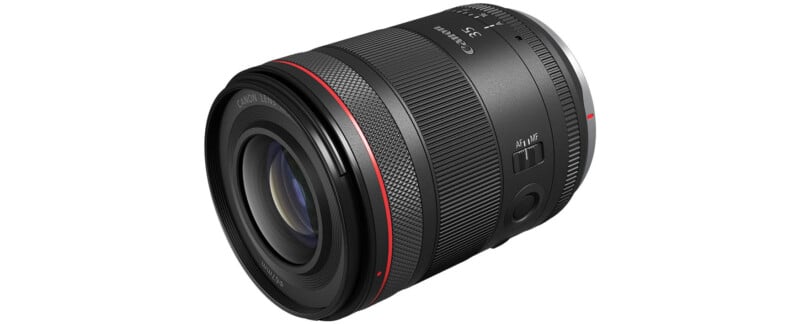Canon Claims it Has the Best Autofocus in the Industry
![]()
Speaking to PetaPixel at CineGear Expo in Los Angeles, Canon executives expressed their belief that the company remains an industry leader despite increased competition, especially when it comes to autofocus technology.
“I believe Canon’s [autofocus] technology has an advantage in terms of its ability to track subjects. Dual Pixel CMOS AF has an advantage in its sensor structure,” Canon’s Go Tokura told PetaPixel last month. Tokura is Executive Vice President of Canon, Head of the Imaging Group, and Chief Executive of Canon’s Imaging Business Operations.

“Furthermore, the EOS R1 flagship model utilizes deep learning to achieve high-precision subject detection and an ‘Action Priority’ function. I believe there is still room for further evolution; these features could also be used for video in the future. Even now, Canon is a leader in this field,” Tokura continued.
Canon’s Dual Pixel CMOS AF has long been very impressive, especially for hybrid cameras and video-focused applications. However, the hybrid camera market has never been more competitive than it is in the mirrorless era. When asked if he believes Canon can fend off its competitors, Tokura was adamant that yes, Canon remains the leader in terms of autofocus performance.
The company’s recent EOS R5 Mark II camera, arguably its best option for both still photographers and hybrid creators, boasts powerful autofocus performance that helps make the R5 Mark II the best camera in its class.
However, while the R5 Mark II is an excellent camera for both photo and video, thanks in large part to its Dual Pixel CMOS AF, Canon hasn’t updated its “true” hybrid EOS R series camera, the EOS R5C, in a while. That camera, a customized version of the original EOS R5 for video-first users, was released over three years ago, and an EOS R5 Mark II version would be a welcome addition to Canon’s lineup.
Tokura acknowledged that the line between photographers and videographers has gotten increasingly blurred, and that the company “will respond to their needs.”
“However, rather than simply fusing [photo and video cameras] together, we believe that we need to look at how users use products and find new ways to combine them,” said Tokura.

Although Tokura did not explicitly cite Canon’s new series of VCM hybrid prime lenses, which comprises 20mm f/1.4, 24mm f/1.4, 35mm f/1.4, and 50mm f/1.4 lenses, they are a clear reflection of Canon’s desire to find new ways to satisfy photographers, videographers, and, of course, hybrid shooters.
Likewise, Canon’s Z series zooms, the RF 24-105mm f/2.8 L IS USM Z and RF 70-200mm f/2.8 L IS USM Z, cater to hybrid creators thanks to video-friendly handling and power zoom compatibility.
There is still arguably plenty of space in Canon’s lineup for a new R5C model built around the excellent EOS R5 Mark II, but the company is committed to the professional hybrid market and responding to user needs in multiple ways.
Image credits: Canon. Header image created using an EOS R1 sample photo by Chris Niccolls.